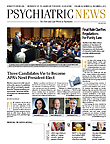Prevent if you can and treat if you can’t might have been the motto at the fourth Road to Recovery conference sponsored by the Johns Hopkins Bayview Medical Center in Baltimore on September 23.
Nicholas Ialongo, Ph.D., a professor of mental health at the Johns Hopkins University School of Public Health and director of the Center for the Prevention of Youth Violence, has been working on the prevention side.
In studies conducted in inner-city Baltimore, Ialongo and colleagues have used randomized effectiveness trials to test ways to improve teachers’ behavior management in the classroom and reduce negative student behavior.
The intervention they chose was the Good Behavior Game, a longstanding strategy that seeks to reinforce students’ control over attention and behavior in the classroom. The children decide what behavior is good or bad. They are divided into teams but compete not against each other but against the standard. Rewards are not material but may include increased free play time or the like. The researchers also developed ways to improve communication between parents and the school, and teachers led workshops for parents to teach positive disciplinary techniques.
Poor discipline often lies at the root of school problems and ultimately of substance use in adolescence, said Ialongo.
“Inconsistent discipline at home leads to tantrums by the child and parental withdrawal,” said Ialongo. “The behavior continues into school, and kids get rejected by peers and teachers and then drift into deviant peer groups, which can lead to early initiation into drug use.”
In the study, the Good Behavior Game was introduced in the first and second grades, and students were followed for 15 years. The effects on high school graduation rates (odds ratio=1.7) and delay of experimentation with hard drugs or tobacco were evident 15 years later (hazard ratio=3.5) but were modest and most visible among boys as well as students who were worse off to start with, said Ialongo.
“Girls have better concentration and attention, while boys are more persistent in inattentive behavior,” he said. “This is one piece of a larger pattern of prevention, not a panacea.”
The intervention itself disappeared over time because of high turnover rates among teachers and administrators in the schools, he said. His team is now pilot-testing an online version of the training and supervision program.
Of course, if prevention fails, there’s always treatment, and jails and prisons represent some of the most difficult settings for treating patients, said Robert Schwartz, M.D., medical director and senior research scientist at Friends Research Institute in Baltimore and an associate professor of psychiatry at the University of Maryland School of Medicine.
Options other than treatment have major drawbacks, however, he said.
“Untreated opioid withdrawal is cruel, and the associated morbidity reduces the desire to enter outpatient treatment after release,” he said. “Untreated illegal opioid use in prison leads to violence and corruption, as well as increased rates of HIV and hepatitis infection.”
Also, failure to treat during incarceration will likely lead either to relapse when the ex-prisoner returns to environments with drug-use cues and bad companions or overdoses due to lower tolerances caused by drug abstinence behind bars.
“Give the patient treatment options and explain risks and benefits,” he said. Providing withdrawal and detoxification followed by maintenance treatment can prepare the patient for release.
A study comparing treatment with the opioid agonists methadone and buprenorphine during incarceration found that 48 percent of individuals who had received buprenorphine entered community treatment after release, compared with 23 percent of those given methadone. However, the advantage disappeared three months later as rates of drug use, rearrest, and criminal behavior equalized.
Opioid antagonists like naltrexone block the effects of heroin and are not addictive, but patient adherence is poor, said Schwartz.
“Extended-release naltrexone has a high potential for pre-release use because patients have to be detoxified first, and most prisoners are opioid abstinent,” he said. “An intramuscular injection before release protects from overdose after release and may give them enough time to get into treatment.”
Research into that approach is now going on, he said. ■
